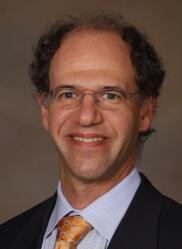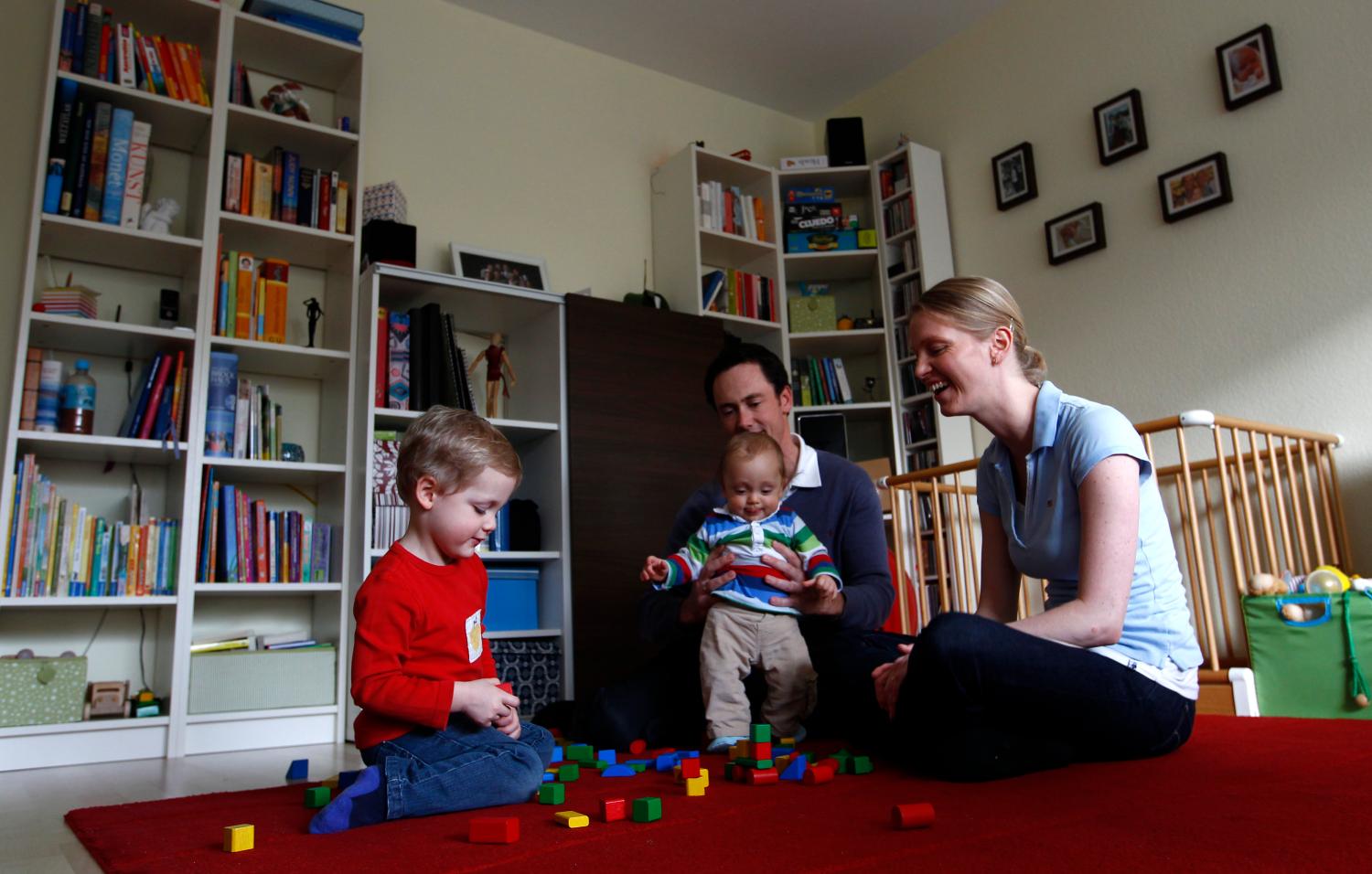The 1996 welfare reform law included provisions specifically designed to prevent major changes in the welfare system from leading to the loss of Medicaid health insurance for low-income children and adults. Despite these provisions, Medicaid enrollment among this group fell in the first few years after welfare reform, leading many to conclude that something had gone wrong. In recent years, Medicaid enrollment has begun to climb again. As the federal welfare law comes up for reauthorization in 2002, policymakers may want to consider changes in the law that would increase Medicaid coverage for low-income families.
Medicaid and Welfare Eligibility Policy
Since its enactment in 1965, the primary path by which low-income parents and their children have become eligible for Medicaid is through receipt of cash welfare, in particular, the Aid to Families with Dependent Children (AFDC) program. AFDC was only available to families that met a “deprivation” standard, meaning the death, continued absence, incapacitation, or unemployability of at least one adult in the family. Maximum income standards for eligibility varied across states, with the median state (on the eve of the 1996 welfare reform law) restricting eligibility to families with income no greater than 36 percent of the federal poverty level.
Expanding Medicaid Eligibility Prior to Welfare Reform
More than a decade ago, the Medicaid and welfare eligibility paths began to diverge. During the late 1980s, a series of laws created two new eligibility categories for Medicaid: children under age 6 and pregnant women with incomes below 133 percent of poverty (with a state option to go as high as 185 percent); and children under age 19, born after September 30, 1983, from families with incomes below the federal poverty level. Another Medicaid provision allowed states to set their own income disregard policies, effectively permitting them to expand eligibility beyond these levels.
Three other eligibility policies are relevant to the relationship between Medicaid and welfare. First, the Family Support Act of 1988 created Transitional Medical Assistance (TMA), which required states to extend Medicaid coverage for 12 months to families that lose AFDC eligibility because of earnings. Second, “medically needy” programs are a state option and permit some people with incomes above welfare eligibility standards, or with substantial health care costs, to obtain Medicaid coverage. Third, states may obtain research and demonstration waivers in their Medicaid and welfare programs, which can include expanding coverage to new groups.
These policy changes started a process of what has come to be known as the “delinking” of Medicaid eligibility from welfare eligibility. These new “non-cash” or “poverty-related” eligibility groups consisted of people eligible for public health insurance coverage, even though their families were not necessarily receiving cash assistance. In 1996, as welfare reform was being implemented, 53 percent of Medicaid-enrolled children and 59 percent of Medicaid-enrolled adults fell into this non-cash category.
Protecting Medicaid Eligibility during Welfare Reform
The federal welfare reform law of 1996, which replaced AFDC with the Temporary Assistance for Needy Families (TANF) program, was written with an eye toward assuring continued Medicaid coverage for all eligible groups. The Medicaid-related provisions of the welfare law are complex, but in general they:
freeze Medicaid eligibility standards as they existed on the date of the law’s enactment;
provide states with flexibility to expand coverage to all members of a family in which at least one child meets Medicaid eligibility standards, and give states new flexibility in how they count income;
narrow children’s eligibility for Supplemental Security Income, which is accompanied by Medicaid coverage; and
limit or eliminate Medicaid eligibility for many legal immigrants.
One year after welfare reform, Congress passed the State Children’s Health Insurance Program (SCHIP), which provides states with new federal funds to expand health coverage for children, either by developing new or expanding existing state-funded programs, or extending Medicaid eligibility to more children.
Medicaid in the Wake of Welfare Reform
TANF and Medicaid have different objectives. TANF is designed to be temporary and transitional and is targeted at only the poorest families. Medicaid benefits, by contrast, are not time-limited and aim to assist a large number of low-wage working families that are not offered coverage through their employer. How do these two systems work together?
Medicaid caseloads peaked in 1995 after several years of growth, then fell until 1998, when a slow turnaround began in most states. Enrollment began falling prior to federal welfare reform, presumably because of the strong economy and state welfare reform efforts that preceded the federal law. Table 1 shows that the number of people who were enrolled in Medicaid at any point in a given year fell from 41.7 million in 1995 to 40.4 million in 1998. The number of children and non-disabled adults each fell by about 1 million, with the percentage reduction for adults roughly twice that of children (10 percent vs. 4.5 percent). These declines are attributable to reductions in the number of Medicaid enrollees eligible by receipt of cash welfare. The number of adult and child cash welfare enrollees fell by 1.9 million persons and 3.6 million persons, respectively, between 1995 and 1998.
While the number of Medicaid enrollees eligible by receipt of cash welfare decreased, the number of non-cash enrollees increased significantly. Adult non-cash enrollees increased by 1 million while child non-cash enrollees increased by 2.6 million. The increases in non-cash enrollees were no doubt partially in response to the reduction in cash enrollees, as many of the latter (particularly children) remained on Medicaid through eligibility pathways other than cash welfare.
Declines in Medicaid enrollment began to turn around in 1998. A study of state Medicaid enrollment data by the Kaiser Commission on Medicaid and the Uninsured showed that after average monthly enrollment declined between June 1997 and June 1998, it then increased between June and Decem-ber 1998. A year later Medicaid enrollment had increased again, by 3.6 percent over the previous year.
Why Did Medicaid Enrollment Fall?
Four factors played a role in the falling Medicaid caseloads. First, the strong economy was increasing people’s earnings: higher earnings means fewer people are eligible for Medicaid. Second, many people were leaving welfare and losing Medicaid coverage as well. Despite the fact that most of these families were eligible for Transitional Medical Assistance for up to a year, and, given their low earnings, their children continued to be eligible for Medicaid even longer, many faced administrative or other barriers to retaining Medicaid enrollment as they left welfare. Third, welfare rolls were falling as families faced more significant hurdles to obtain benefits. Most states adopted either formal diversion programs or added steps (such as job search or an orientation meeting) that had to be completed before a cash assistance application would be accepted. These policies diverted or discouraged families from applying for Medicaid, even if they were eligible. Finally, Medicaid enrollment of immigrants fell as new immigrants were made ineligible by the 1996 welfare reform law and some eligible immigrants left the rolls due to confusion or concerns that participating in Medicaid would affect their immigration status.
Two recent studies have attempted to sort out the effects of welfare reform and the economy on Medicaid enrollment. The first, by Amy Davidoff and her colleagues at the Urban Institute in Washington, D.C., simulated the impact on eligibility of changes in Medicaid eligibility rules and changes in the economy. This study found that if eligibility rules had not changed, rising incomes would have decreased the number of children eligible for Medicaid to 20.5 million in 1997, down from 22.9 million in 1994. In fact, 24.1 million children were eligible in 1997, meaning broader eligibility rules-such as expanded income disregards, expansions to older children, and expansions through waivers-increased Medicaid eligibility by 3.6 million children. Similarly for adults, the improved economy would have reduced eligibility from 7 to 6 million adults, but expanding rules added back 500,000 adults, leaving 6.5 million eligible.
The authors then analyzed changes in actual Medicaid enrollment to determine the effect of changes in administrative practices, diversion efforts, and other aspects of welfare reform. This analysis demonstrated that, while economic and eligibility changes subsequent to federal welfare reform should have yielded greater Medicaid enrollment, Medicaid rolls fell after welfare reform. This was entirely due to lower enrollment among those eligible, presumably due to behavior changes and more restrictive state administrative practices.
A second study, conducted by Bowen Garrett and Alshadye Yemane of the Urban Institute, used an econometric model to examine the relative impact of welfare reform and the economy on caseload declines. Using data from 1991 to 1998, they concluded that both welfare reform and the growing economy contributed to the decline in Medicaid enrollment, though welfare policies played a larger role.
Did Those Leaving Welfare Become Uninsured?
Bowen Garrett and John Holahan of the Urban Institute used data from the National Survey of America’s Families to analyze whether those who left welfare retained insurance coverage (through Medicaid or privately) or became uninsured. They found that, one year after leaving welfare, 22 percent of the women and 47 percent of the children retained Medicaid, while 49 percent of the women and 29 percent of the children became uninsured. Those who left welfare and obtained jobs were more likely to obtain private coverage and less likely to become uninsured. Yet even among those who left welfare and obtained employment, 34 percent of adults and 24 percent of children were uninsured a year after leaving welfare.
In another study of changes in insurance coverage, Holahan and Johnny Kim of the Urban Institute found that 8.4 percent of the non-elderly population was on Medicaid in 1998 versus 10 percent in 1994, a drop of 3.1 million people. Of those below 200 percent of poverty, the percentage on Medicaid dropped from 24.9 to 22.5, a decline of 3.3 million people. Although employer-sponsored coverage for low-income people increased somewhat, there was a net increase of 800,000 in the number of uninsured people. This number would have been much larger if the expanding economy had not shifted so many people into higher income groups.
The rate of employer-sponsored health coverage continued to increase between 1998 and 1999. As a result an additional 500,000 people gained coverage. But unlike previous years when Medicaid declined, the percentage of people on Medicaid remained relatively constant. Because Medicaid enrollment stabilized, the increase in employer and individual coverage translated into a reduction of 1.2 million people among the low-income uninsured.
Responses to Falling Enrollment
Falling Medicaid caseloads were universally interpreted as a sign of failure, which prompted a flurry of activity. Some states responded on their own. The federal government stepped into the fray with a letter from the Depart-ment of Health and Human Services instructing states to make sure that Medicaid eligibility was re-determined when people left cash assistance. Advocates pointed out that states had made limited use of a $500 million allocation in the welfare reform law specifically designed to assist states in improving their Medicaid eligibility systems.
Taking De-Linking Seriously
The story of falling Medicaid rolls reveals the complications involved in de-linking Medicaid from welfare. As a practical matter, most states had simply added new eligibility categories to the Medicaid program while continuing to administer it in the same way. Eligibility continued to be determined by traditional welfare agencies using rule-based systems administered by eligibility technicians.
Recent policy changes have given states two new opportunities to fundamentally alter the relationship between Medicaid and welfare, and go beyond simply fixing the administrative systems that determine Medicaid coverage. These opportunities came in the form of the new SCHIP program enacted in 1997, and through increased flexibility in Medicaid program design given to states in 1996 by Section 1931 of the Social Security Act.
SCHIP offers states the opportunity to design entirely new eligibility and enrollment systems for health insurance that operate apart from the old welfare system and its emphasis on fraud prevention and error reduction. Under SCHIP, states may simplify their eligibility categories, measures of income, and required documentation to apply for and prove eligibility. States may develop new eligibility systems (separate from welfare agencies and offices) that accept electronic, telephone, or mail-in applications, or rely on private vendors to conduct enrollment functions. States have great flexibility in defining the benefits provided under SCHIP, the cost sharing provisions, and the networks of providers they will use. Much of what states have done with their flexibility in SCHIP they can also do in Medicaid-and some already have.
Section 1931 of the Social Security Act offered states a different opportunity to address the issue of family fragmentation that existed in prior Medicaid policy. The practical effect of de-linking Medicaid eligibility from welfare was to make a large number of children eligible for Medicaid coverage even though their parents were ineligible. Prior to welfare reform, in most states, different members of the same family were likely to have different insurance status, with Medicaid eligibility based on income as well as age. Section 1931 gave states the option of covering all members of a family in which the children met Medicaid eligibility standards. This provision, combined with the flexibility in measuring income noted above, allows states to greatly expand their Medicaid coverage to families of almost any income.
It is too early to tell if simplified eligibility rules and more complete family coverage will yield significant increases in participation by otherwise uninsured people who are eligible for public insurance coverage. Setting aside the specific effects of particular policies, these changes demonstrate the potential of de-linking Medicaid and welfare. It is possible to develop separate systems for the two programs, encouraging enrollment in Medicaid while operating a welfare system that emphasizes work.
Policy Implications
The Medicaid provisions of the 1996 welfare reform law led to unintended declines in Medicaid enrollment by adults and children. Although states and the federal government responded to remedy the problem, many observers think that too many adults and children still lose Medicaid coverage when they make the transition from welfare to work. In the context of welfare reform reauthorization, Congress may be tempted to focus public policy on assuring that families retain their Medicaid coverage when they leave welfare. States could be given performance targets to assure that a high percentage of those who leave welfare have either private or public coverage. While such policies would certainly benefit some people, we consider this approach to designing the Medicaid-welfare interaction too narrow.
Rather, public policy should emphasize the complete de-linking of Medicaid and TANF eligibility. The goal should be to create health insurance programs that serve the needs of all who are eligible, whether they are currently on welfare, recently left the rolls, or have never had any contact with the welfare system.
We recommend three steps to accomplish this goal. First, federal policies should continue to encourage states to expand coverage as they have done in recent years. SCHIP increased the average eligibility level for older children from 76 percent to 208 percent of the federal poverty level (about $11,000 to $30,500 for a family of three in 2001). Several states, including California, New Jersey, and Connecticut, have adopted significant Section 1931 expansions. Other states, including Massachusetts, New York, and Rhode Island, have used waivers to substantially expand coverage.
Second, federal and state policy should build on practices that simplify Medicaid eligibility. Many states have already taken significant steps in this direction. Yet participation rates for those not receiving cash assistance remain in the 50 percent to 60 percent range and vary considerably among states. Eliminating asset tests, simplifying eligibility categories, reducing documentation requirements, minimizing cost sharing, and adopting longer periods of eligibility can all make the program more supportive of working families.
Third, Congress and the states should continue adopting incremental expansions of coverage while acknowledging that reaching new populations requires new funding. Among the many ideas being considered, two proposals warrant mention. The FamilyCare Act of 2001, introduced by chairman Ted Kennedy in the Senate, would not increase matching rates for current Medicaid populations, but would extend coverage to parents of Medicaid and SCHIP children at the higher SCHIP matching rate. The Bush administration has proposed tax credits for the low-income uninsured ($1000 for single adults and $2000 for families) to allow them to buy private coverage. While neither of these proposals is directed at families leaving welfare, they have the potential to reduce work disincentives by expanding coverage opportunities as people take jobs and their incomes increase.
The federal government can provide incentives or mandate that states expand coverage or change administrative systems. In recent years, the federal government has relied primarily on financial incentives, and there has been progress under this model. But progress is uneven, with only 15 states extending coverage to parents with income above the federal poverty level and just 10 states covering non-parent adults at all. In addition, financial incentives may be insufficient if state fiscal conditions continue to deteriorate, making the state share of program costs harder to cover. Still, the federal government should retain and expand financial incentives for states, although this policy will leave considerable interstate variations in place.
The best way to make Medicaid and SCHIP operate as effective work supports for families leaving welfare is to make sure that all families eligible for these programs actually receive the benefits. Despite bumps along the road, the nation has made good progress in de-linking these programs from welfare and recognizing that public health insurance programs meet needs well beyond the welfare population. The future success of welfare reform is dependent in part on building health programs that support all low-income families that do not have cover age through their job and that cannot afford insurance on their own.
The Brookings Institution is committed to quality, independence, and impact.
We are supported by a diverse array of funders. In line with our values and policies, each Brookings publication represents the sole views of its author(s).




